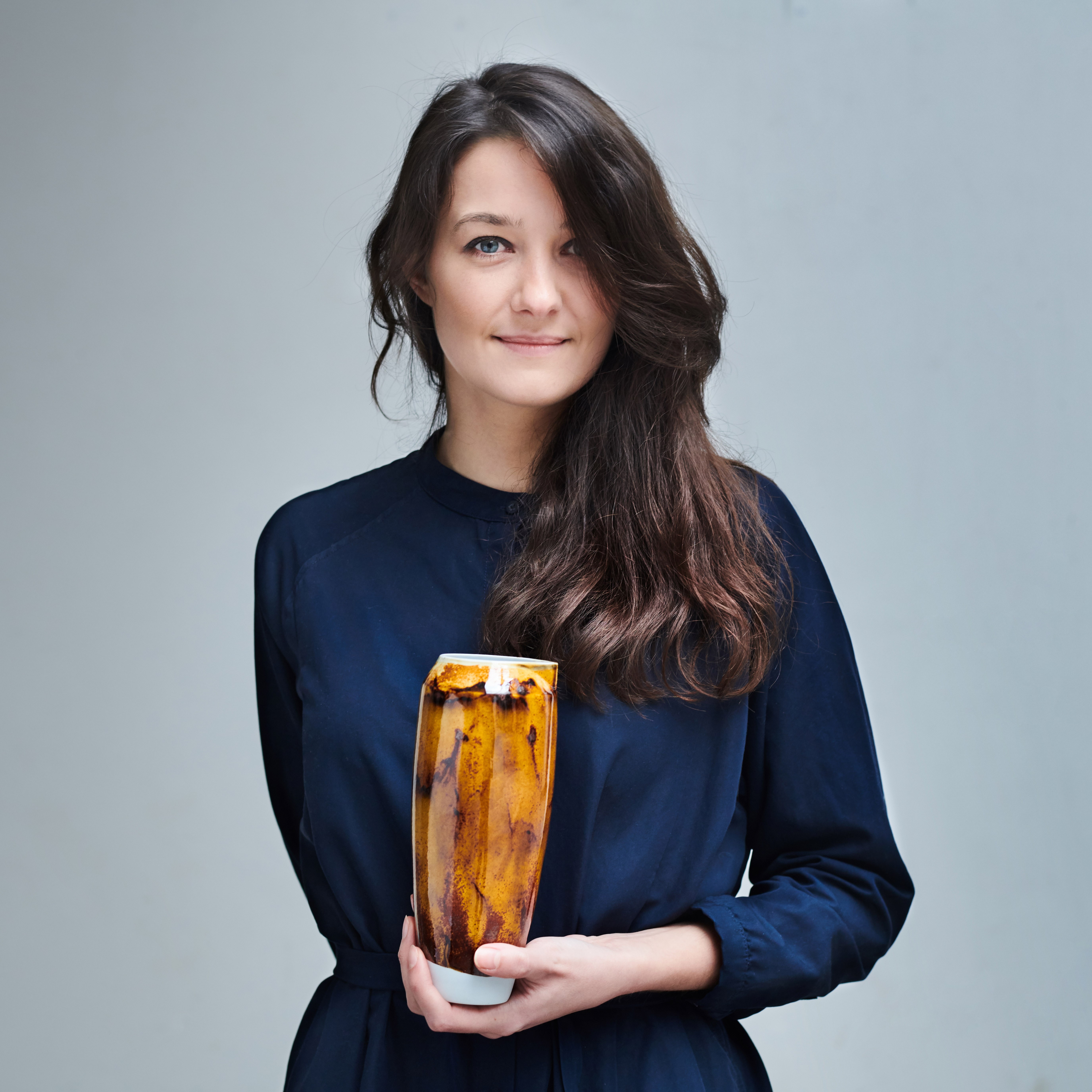Rug collection 'Lutetia' and 'Juno'
Rug 'Lutetia' fragment
Rug 'Juno' fragment
Rug 'Lutetia' fragment
-
Name of the submitted project or idea (in English or both English and your language)
Rug collection Lutetia and Juno
-
URL of a video introducing the work(under 5 minutes)
n/a
-
Detailed explanation of the submitted project or idea (in English or both English and your language)
Rug collection 'Lutetia' and 'Juno' are part of the 'Ignorance is Bliss' brand. Rugs are coloured using upcycled textile dyes that originate from botanical and metal waste and by-products. Commercial textile dyeing causes a significant amount of environmental and health problems due to the chemicals used in the process whereas natural dyeing is rarely employed on an industrial scale. Drinking water supply and agriculture industries are the main waste suppliers for the collection. Leftovers of mostly organically grown plants do not contain toxic additives as they are intended for use in the food and pharmaceutical industries. Flax is versatile, cost-effective, resilient, and its cultivation requires far less water and pesticides than cotton. The 'Ignorance is Bliss' rug collection is made from linen; a deliberate choice as it is a durable, resistant, and hypoallergenic material. At the moment, yarns are hand-dyed with 9 natural colours that have been developed from waste. 'Ignorance is Bliss' rugs are designed with great detail and hand-tufted by skilled, craft-minded manufacturers.
The rug design is a blend of organic and geometrical shapes resembling natural and artificial. The structures within the rugs are inspired by the shapes of asteroids 'Lutetia' and 'Juno'. An asteroid is a small rocky object orbiting the sun. Asteroids are 'by-products' from the formation of our solar system. Since asteroids formed at the same time as other objects in our solar system, these space rocks can give scientists lots of information about the history of the universe. The parallel is drawn between an asteroid, being a primal raw material, and industrial waste similarly being a starting point for the creation of new materials and objects. There is a gentle gradient fusion between colours allowing to create a rich blend of colour combinations. Gradients and varying pile heights that cast slight shadows provide a three-dimensionality to the collection. -
Keywords
#rug #waste #upcycling
-
If you have a website for your submitted project or idea, please provide the URL
https://ignorance-bliss.com/products/linen-rugs
-
Special Prize Question 1: How does your project or idea make use of local resources, such as materials and knowledge, to tackle its challenge?
Lithuanian partner 'Jorus' is a mid-size farm and cultivates approximately 364 hectares of land. In 2020 Jorus processed around 2 tonnes of hemp for food and pharmaceuticals. They accumulated around 800 kilograms of hemp shells waste. Another partner 'Forest Energija' generates around 24 tonnes of various botanic waste per year. Even though those partners grow sustainably, they are facing difficulties with the residue. A part of this by-product can be sold to the livestock feed, but there are no clear regulations and understanding of additional potential use. Shells are spread in the fields, but with a continually growing business, they admit, that it will be neither logical nor economical. The conducted research with various waste streams shows that most can be repurposed in creative ways and become a part of circular models, such as making textile dyes. For the rugs 'Lutetia' and 'Juno', a total amount of 19.77 kilograms of waste was used. Material choices, such as flax and production methods are wellthought and part of the design solution: both process and product. Waste materials, fixators, and mordants used in the rug collection are natural, without threat to human and environmental health.
-
Special Prize Question 2: How does your project or idea sustain its activities through the involvement of the local community?
'Lutetia' and 'Juno' rugs are a part of the 'Ignorance is Bliss' brand, where theoretical and material research is conducted, waste and secondary raw materials are upcycled, and which encourages collaboration between industries, designers, environmentalists, scientists, architects, and manufacturers. Drinking water supply and agriculture industries are the main waste suppliers for rug collection. Local company 'Ecolinum' makes exclusive, hand-tufted linen rugs and is a current producer of the collection. These partnerships involve not only the supply of raw materials but also a more collaborative approach, as we analyze and determine possible applications of waste and secondary raw materials.
The sustainable approach of the project is seeking the active involvement of manufacturers and craftsmen, and hereby maintaining, evolving, and applying their skills in a cross-industrial context. Moreover, this project is oriented towards the circular economy, which creates social responsibility and targets consumers who want to make a positive difference with their purchase decisions and have a natural, handmade and durable product. -
Special Prize Question 3: How does your project or idea eliminate waste or pollution while regenerating natural resources?
The research-based project utilises industrial waste and secondary materials (such as hemp, mustard, evening primrose, and iron), and reuses them to dye linen rugs, thus creating a higher value. Recycling and upcycling waste materials and by-products as a colorant, is challenging current pigment manufacturers. 'Ignorance is Bliss' solutions substitute factory-produced substances with waste or create completely new formulations and materials. Surprisingly, the irregularities present in residue lead to more vibrant design objects. The sustainable approach of the project is seeking an active involvement of manufacturers and craftsmen, and hereby maintaining, evolving, and applying their skills in a cross-industrial context.


